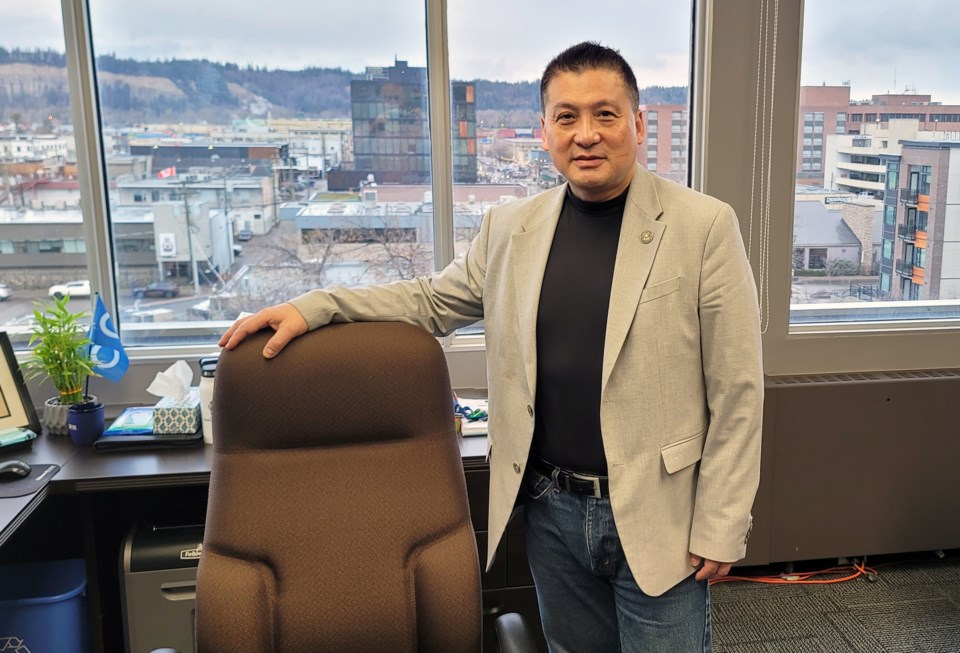Prince George Mayor Simon Yu knows the sickening gut punch that came with Canfor’s latest forest industry cutbacks that will have a direct hit on the region’s economy.
On Thursday, the Vancouver-based forest giant announced it will permanently close its Polar Sawmill at Bear Lake, 74 kilometres north of Prince George, casting 180 employees out of work.
Canfor is also indefinitely curtailing one of the pulp lines at Northwood Pulp & Timber, with the ensuing loss of another 220 jobs.
The company is also suspending its planned reinvestment in its already-curtailed sawmill in Houston, about 300 km west of the city.
“My first reaction was I tried to imagine the suffering and stress on those poor workers and their families, it’s devastating to the people involved,” said Yu.
“My other reaction was that we’ve been watching this happen over the last decades and we knew there was a time when the fibre supply would be short, but we had no idea it would be this kind of magnitude. It’s difficult to swallow, as a town and a region that relies on forestry so heavily over decades.”
The pending closure and Northwood cutbacks are just the latest in a round of ominous business decisions that have eaten into the heart of the north central Interior forest economy.
In January, West Fraser Timber announced the closure of Fraser Lake Sawmill with 175 people losing their jobs and the resultant loss of the major employer in a village of about 1,000 people, 158 km west of Prince George.
In January 2023, Canfor announced the closure of its pulp line at Prince George Pulp and Paper Mill, costing the workforce another 300 positions.
All the closures combined at the five sites add up to 575 lost positions and it could be more if the Houston mill suffers any more curtailments and/or closures. That doesn’t take into account all the down-the-line workers whose jobs are affected such as tradespeople, suppliers, truck drivers, and retail/service industry workers.
Yu said the highest priority has to be given to establishing retraining programs for the affected workers to keep them from being forced to move to other regions to find employment.
While the Prince George Pulp closure was largely absorbed by older workers who took early retirement packages, with younger workers to keep their jobs, there are not nearly as many older workers remaining in either Canfor mill who are close to retirement age. Most of the Northwood pulp line staff are in the 25-40 age range, and Yu worries that without government employment assistance interventions they could be forced to move to other cities to maintain their mortgages and vehicle loan payments.
“Immediately we must come together as a region to analyze the skill set of all the people affected and see where we can get some retraining programs and get some jobs for them,” said Yu. “We want to take a look at all the city projects and if we can use the skil lset of the people getting laid off. Perhaps we can initiate some infrastructure projects and make sure the jobs go to these people.
“A lot of them are very advanced technicians. There’s welders, there’s electricians there. We need to look at all our capital projects and talk to Victoria and talk to Ottawa about infrastructure projects to get the next phase of Prince George ready.”
In the Friday release, Canfor Pulp CEO and president Kevin Edgson said natural factors, such as wildfires and beetle kill, have resulted in harvest levels well below the Allowable Annual Cut, but he also said chronic shortages of economic available timber are increasingly due to the impact of a range of policy choices and regulatory complexity.
Yu said it doesn’t help to point the finger at provincial governments and their forest management practices and says that that won’t provide any solutions to the people who are about to lose their jobs.
“Blaming each other isn’t going to get us anywhere,” Yu said. “The next step is to look after the people involved. This is not the time to assign blame or assign responsibilities, we’re all going to be responsible to make the decisions together as one unit, the Indigenous nations, the government, the industry and, most importantly, the workers involved.
“We have to pivot the economy but we must not lose faith in each other," he said. "I still have faith we are going to have a forest industry, but while the forests rest for the next few decades, what do we do to ensure that we have a good productive forest industry that involves some innovation in the primary forest sectors?
“Hopefully we can put our heads together and start to do some manufacturing of wood products right here in the region to produce better value for the trees we do have.”



